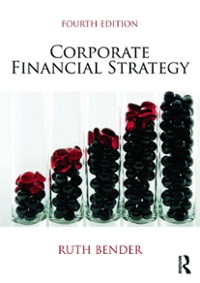Question
2. Ratchford Clocks manufactures alarm clocks and wall clocks, and allocates overhead based on direct labor hours. The production process is set up in three
2. Ratchford Clocks manufactures alarm clocks and wall clocks, and allocates overhead based on direct labor hours. The production process is set up in three departments: Assembly, Finishing, and Calibrating. The following is information regarding the direct labor used to produce one unit of the two clocks:
Per Unit Hours:
Assembly
Finishing
Calibrating
Alarm clocks
3
1
1
Wall clocks
2
3
2
Totals
5
4
3
The budget includes the following factory overhead by department:
Assembly Department
$595,000
Finishing Department
200,000
Calibrating Department
140,000
Total
$935,000
Ratchford Clocks is planning to manufacture 50,000 alarm clocks and 10,000 wall clocks.
(a)Determine the total number of hours that will be needed by department.
(b)Determine the factory overhead rate by department using the multiple production department factory overhead rate method.
(c)Determine the amount of factory overhead to be allocated to each unit of alarm clocks and wall clocks.
(d)Determine the amount of total factory overhead to be allocated to the alarm clocks and wall clocks.
3.On October 31, the end of the first month of operations, Morristown & Co. prepared the following
income statement based on absorption costing:
Morristown & Co.
Income Statement
For Month Ended October 31, 20-
Sales (2,600 units)
$104,000
Cost of goods sold:
Cost of goods manufactured
$85,500
Less ending inventory (400 units)
11,400
Cost of goods sold
74,100
Gross profit
$ 29,900
Selling and administrative expenses
21,500
Income from operations
$8,400
========
If the fixed manufacturing costs were $42,900 and the variable selling and administrative expenses
were $14,600, prepare an income statement in accordance with the variable costing concept.
4.For the current year ending April 30, Hal Company expects fixed costs of $60,000, a unit variable cost
of $70, and a unit selling price of $105.
(a)
Compute the anticipated break-even sales (units).
(b)
Compute the sales (units) required to realize an operating profit of $8,000.
5. The following data are taken from the balance sheet at the end of the current year.
Cash
$154,000
Accounts receivable
210,000
Inventory
240,000
Prepaid expenses
15,000
Temporary investments
350,000
Property, plant, and
equipment
375,000
Accounts payable
245,000
Accrued liabilities
4,000
Income tax payable
10,000
Notes payable, short-term
85,000
Determine the (a) working capital, (b) current ratio, and (c) quick ratio. Round ratios to
one decimal place.
6. The following data are available for Martin Solutions, Inc. Determine for each year: (a) Inventory
Turnover and (b) the number of days' sales in inventory (Round to one decimal place.
Year 2
Year 1
Sales
$1,139,600
$1,192,320
Beginning inventory
80,000
64,000
Cost of goods sold
500,800
606,000
Ending inventory
72,000
80,000
Step by Step Solution
There are 3 Steps involved in it
Step: 1

Get Instant Access to Expert-Tailored Solutions
See step-by-step solutions with expert insights and AI powered tools for academic success
Step: 2

Step: 3

Ace Your Homework with AI
Get the answers you need in no time with our AI-driven, step-by-step assistance
Get Started


